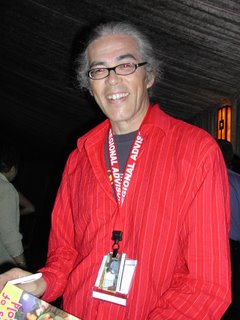
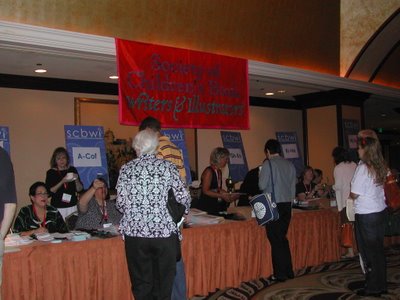
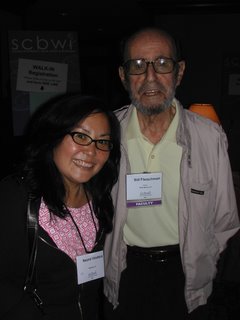
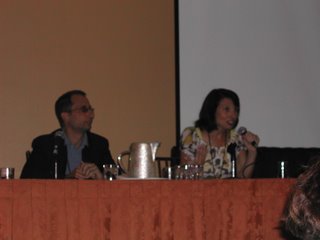
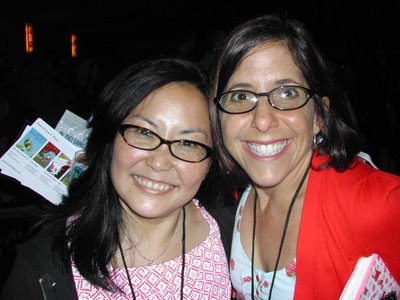
SCBWI? What's that? A new dance? A new IM term? No, it stands for the Society of Children Book Writers and Illustrators, a group which has its national conference in Century City (that's in Los Angeles) every August.
Like last year, I attended for just one day and this year my magic day was Friday, which opened the whole four-day event. I had grand plans to do an in-depth post, but I'm so dog-tired that I'm going to cheat with some photos.
There were 900 full-time registrants! Unbelievable. And at least 400 were published children's book authors. I've been to many writer events in my day, but let me tell you--the SCBWI national conference is one of the most organized. They even served everyone Dove bars before the last two sessions of the day. In other words, they had thought of everything.
The striking man in red up above in Christopher Cheng, an Australian author and animal enthusiast who's father is Chinese. I didn't know this but the Chinese assisted in the Australian gold rush, mirroring the experience of Chinese in California. There was an anti-Chinese movement in Australia, too (Chris showed us a slide of "roll out" banner declaring the explusion of Chinese from the area). He's written three books about the Chinese Australian experience and spoke about writing historical fiction for children. He also tossed out mini-stuffed koalas (they are not bears, everyone--marsupials!) and boomerang keychains to hold our attention. A smart former primary teacher!
Probably the most helpful session was "Getting Serious About Series: An Author & Her Editor Talk About How Series Evolve," featuring Margaret Peterson Haddix, author of the Shadow Children and Missing series, and editor, David Gale. A few observations for writers out there who may be contemplating writing a series for children:
For unpublished writers, don't pitch a whole series to a publisher or agent--unless perhaps it's for the paperback market. A publisher is reluctant to commit itself to a series written by an unproven talent. Why? It's a big monetary commitment, takes away a publishing slot for multiple seasons, etc. If you are interested in writing a paperback series, you have to write fast--perhaps 3 to 4 books a year.
Instead, pitch your first in the series as a standalone. If it does well, the publisher will go back to you for the series. Hardcover series are published once a year for multiple years.
Be flexible as you develop your series. You don't have to map out every book. Secondary characters may end up to be major characters in later books.
A writer's new series needs to be bigger than her future one. (In other words, the pressure's on.)
The whole 12 hours in Century City was amazing. I met legends in children's literature like Sid Fleischman (middle row, right). But perhaps the most "kairos" moment was when I was looking for a good place to eat my yogurt cheese and Europane-baked ciabatta sandwich and saw another bespectacled woman seated alone on the steps near the swimming pool. I asked whether I could with her and it turned out that she was, in fact, a writer at the same publishing house (Delacorte) with the same editor (Claudia Gabel)! And I had even read her book (Stray--get it, you'll love it). It was literally a one out of 1000 (well, 900) chance that I would run into Stacey Goldblatt--a wonderful meeting in a wonderful day. Labels: children's series fiction, Christopher Cheng, Margaret Peterson Haddix, SCBWI, Stacey Goldblatt |

